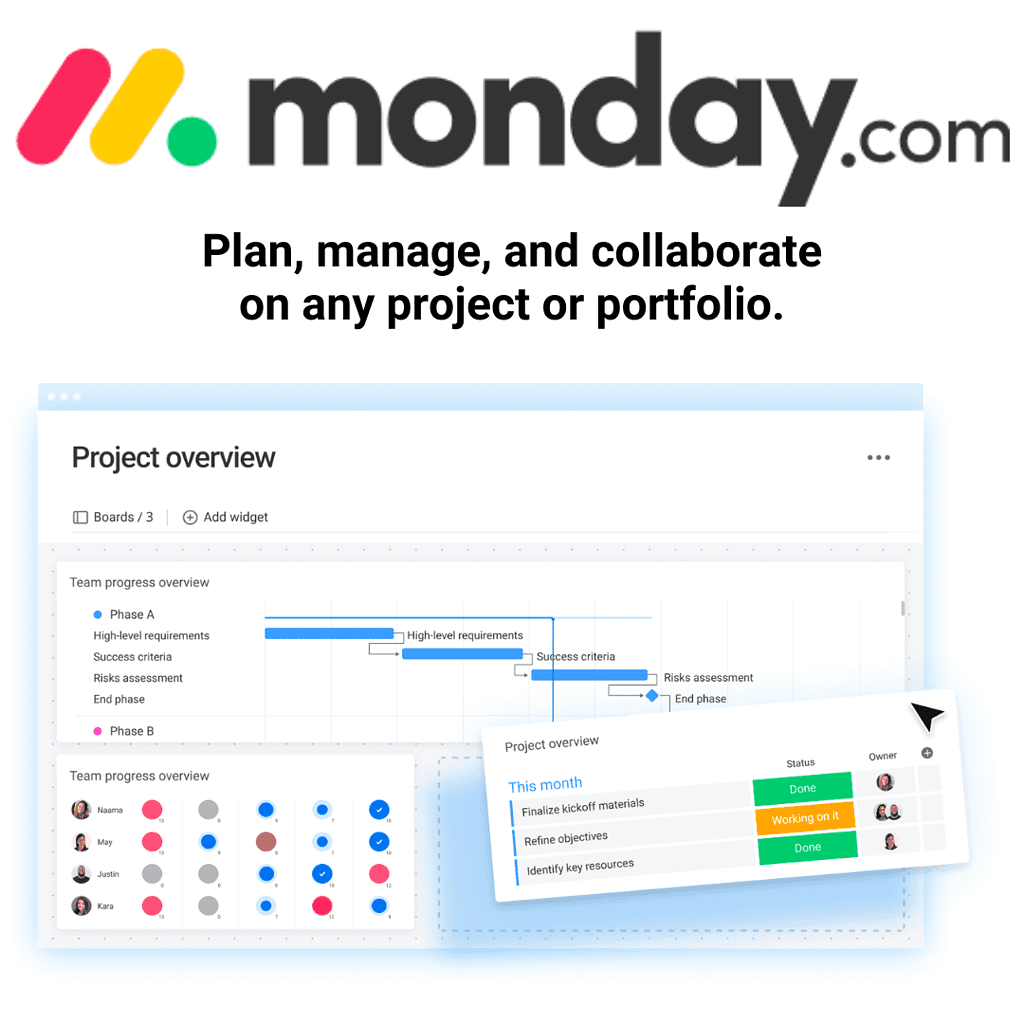How to Avoid These 6 Common Project Management Mistakes

Don’t make these project management mistakes on your next Salesforce project!
Project management is complex. There’s no way to sugarcoat it.
Everyone makes mistakes, including project managers with years of experience. However, some project management mistakes can be easily avoided with little knowledge and forethought.
If you’re a Salesforce Admin, you must be aware of the most common project management mistakes to avoid them in your projects.
This blog post will look at six of the most common project management mistakes and offer tips on how project teams can avoid them.
Read on to learn more!
Mistake #1: Failing to Establish Clear Goals and Objectives With Stakeholders
One of the biggest mistakes you can make when working on Salesforce projects is not setting clear goals and objectives with stakeholders. Without a clear understanding of what you’re trying to achieve, it’s easy for scope creep to set in and the project to lose focus.
This can lead to wasted time and resources and, ultimately, a mediocre or failed Salesforce implementation.
Here’s what you can do to avoid this mistake:
1. Define the project’s purpose
The first step in getting clear goals and objectives from the business is to define the project’s purpose.
- What is the project trying to achieve?
- What business need does it address?
Once the project manager understands the project’s purpose, they can develop specific goals and objectives aligning with that purpose.
2. Understand the business priorities
The next step is to understand the business’ priorities.
- What are the most important things that the business wants to achieve?
- What are their top priorities?
Once the project manager understands the business’ priorities, they can start to develop goals and objectives that align with those priorities.
3. Engage stakeholders
The third step is to engage stakeholders. Stakeholders are individuals or groups who have a vested interest in the project. It is essential to engage stakeholders early on in the project so that they can provide input and feedback on the goals and objectives.
4. Develop smart goals and objectives
Once the project manager has gathered all this information, they can start developing specific, measurable, achievable, relevant, and time-bound (SMART) goals and objectives for the project.
SMART goals and objectives are specific, measurable, achievable, relevant, and time-bound. They are also aligned with the project’s purpose and business priorities.
Taking this proactive approach can help ensure project success for your Salesforce projects.
SNAG THESE FREE RESOURCES!

Struggling to Manage Your Salesforce Projects?
Master Project Management With Our Expert Resources for Salesforce Admins.
Check out some of these FREE RESOURCES, templates, ebooks, and courses to take your project management skills to the next level and take control of your Salesforce career!
Mistake #2: Failing to Plan and Scope the Project Properly
One of the most common mistakes when launching a Salesforce project is failing at the planning stage.
No matter how excited the project sponsor, project manager, and team members are to make progress on the project, they will not be able to without adequately managing the scope of the project.
A well-planned Salesforce implementation will consider all key stakeholders, objectives, and timeline constraints upfront, ensuring that the project stays on track and delivers the intended results.
Conversely, a poorly planned Salesforce project will likely encounter many problems, from misaligned objectives to unrealistic timelines.
How to ensure you properly manage the project scope:
1. Define the project’s goals and objectives.
The first step in ensuring proper planning and scope clarity on a project is to define the project’s goals and objectives. This will give the project manager and team a clear understanding of what the project is trying to achieve and what needs to be done to achieve those goals.
2. Develop a project plan.
Once the goals and objectives have been defined, developing a project plan is next. The project plan should detail the tasks that need to be completed, who will be responsible for each task, and when each task needs to be completed. A detailed project plan will help ensure that all of the necessary tasks are completed on time and within budget. Project management tools like Monday are perfect for tracking the progress of a project and keeping everyone on the same page.
3. Create a work breakdown structure (Wbs).
A work breakdown structure (WBS) is a tool that can further break down the tasks involved in a project into smaller, more manageable pieces. Creating a WBS can help ensure that all necessary work is accounted for and that no essential tasks are overlooked.
Many companies leverage project management software like Monday to create their WBS, which can be easily shared with all project stakeholders and updated as needed.
4. Estimate the resources required for each task.
Another critical part of planning and scope clarity is estimating the resources required for each task. This includes labor needed by any team member or contractor, materials, equipment, and other costs that may be incurred during the project.
Accurately estimating these costs can help avoid surprises down the road and ensure that the project stays within budget. Many project management tools like Monday can help you track the budget and other resources needed to complete any project.
5. Assign responsibility for each task.
Once the tasks have been defined and estimated, assigning responsibility for each task to an individual or team is essential. This will help ensure that everyone knows what needs to be done and who is responsible for it.
Clear assignments can also help avoid confusion and duplication of effort among team members. Project management software like Monday can help you assign tasks and track their progress.
6. Set deadlines for each task.
In addition to assigning responsibility for each task, it is also essential to set deadlines for when each task needs to be completed. This will help ensure that the project stays on track and that all necessary work is completed promptly.
Tracking task deadlines and dependencies are native features in most project management tools, like Monday.
If you’re considering launching a Salesforce project, invest the time and resources necessary to ensure that it’s properly planned and scoped from the outset.
SNAG THESE EMAIL TEMPLATES

200+ project management templates to help you get organized and increase your productivity!
Are you tired of wasting time writing the same email messages repeatedly?
I know your time is valuable, so I’ve created email templates specifically for Salesforce Admins to help you manage your Salesforce projects more efficiently.
Use these templates as a starting point or adapt them to fit your own needs. And you can cut and paste them into whatever email system you need.
Stop wasting time on menial tasks and start managing your projects more effectively.
Get access to a vast library of email templates to painlessly manage the entire project lifecycle!
Mistake #3: Underestimating the Time and Effort Required
One of the most common mistakes when starting a new project is underestimating the time and effort required to see it through to completion. This can be a costly error, leading to frustration and abandonment.
To avoid this pitfall, it is essential to be realistic about the time and energy needed to achieve your goals.
This means taking into account the direct tasks involved and planning for interruptions, setbacks, and unforeseen obstacles. By being honest with yourself from the outset, you can set realistic expectations and increase your chances of success.
In Project Management Secrets, we unpack this issue quite a bit, and I provide some templates and guidance on handling these situations.
DOWNLOAD YOUR COPY!

The quick-start guide to gathering business requirements
Are you responsible for ensuring Salesforce projects run as smoothly as possible?
With the Business Requirements Gathering for Salesforce Projects: The Definitive Guide for Salesforce Admins, you can quickly get up to speed on the best practices for gathering business requirements.
This comprehensive book, written by Salesforce consultant and trainer David Giller, provides powerful methods and insights to ensure your projects are successful.
Mistake #4: Trying to Do Too Much on Your Own
As a project manager, it’s easy to find yourself in a situation where you’re trying to do too much on your own. After all, you’re responsible for overseeing a project from start to finish, and a million things need to be done to ensure its success.
However, attempting to handle everything yourself is often detrimental to the project. When you try to take on too much, you spread yourself thin and increase the likelihood of making mistakes.
Additionally, it can be challenging to keep track of all the different moving parts when you’re trying to do everything yourself.
Rather than trying to manage every aspect of the project by yourself, delegate responsibility to other team members. This will lighten your workload and allow you to focus on more critical tasks.
In delegating responsibility, assign each task to an individual or group with the necessary skills and knowledge to complete it successfully.
By delegating tasks and sharing the workload, project managers can avoid becoming overwhelmed and ensure that their projects are successful.
Mistake #5: Not Communicating Effectively With Team Members.
Not communicating effectively can lead to several problems in the workplace.
When team members are not kept in the loop, it can lead to misunderstandings and conflict. Additionally, making important decisions without input from everyone involved can create frustration and resentment.
Furthermore, ineffective communication can result in missed deadlines and wasted time as team members struggle to work together. Ultimately, poor communication is a recipe for disaster in any workplace.
A few easy steps can make a big difference in Team communication:
1. Have regular Team meetings
One of the best ways to ensure proper communication with team members is to have regular team meetings. At these meetings, you can discuss the project’s progress, any issues that have arisen, and any new ideas or concerns.
This will help keep everyone on the same page and ensure everyone is aware of what is happening.
2. Encourage open communication
It is also important to encourage open communication among team members. This means creating an environment where people feel comfortable speaking up and sharing their ideas.
It can be helpful to establish ground rules for communication at the beginning of the project, such as no interruptions during presentations and allowing everyone to have a turn to speak.
3. Be clear and concise in your communication
As the project manager, it is also crucial that you be clear and concise in your communication with team members. When giving instructions or providing updates, ensure you are as straightforward as possible, so there is no confusion.
Leverage an AI writing tool like Jasper to help you craft impactful emails, presentations, and project updates in record time.
4. Listen to Team members
Another crucial part of effective communication is listening to team members. This means taking the time to hear what they say and consider their perspective.
It can be helpful to ask questions to ensure you understand what they are saying and provide feedback to let them know you are listening.
5. Follow up after communications
After any communication with team members, it is essential to follow up. This could mean sending a summary of the meeting after a team meeting or checking in with someone after a one-on-one conversation.
Following up will show that you value their input and are committed to keeping them in the loop.
6. Use multiple channels of communication
When communicating with team members, it is also essential to use multiple communication channels. This could include in-person meetings, video conferencing, phone calls, emails, instant messages, and more.
Using multiple channels will ensure that everyone can receive and understand the information regardless of their preferred method of communication. In addition, using multiple channels will help to ensure that everyone receives the information and can understand it in the way that works best for them.
Don’t forget to include visuals in communication, as visual elements can help improve understanding. Canva has a tremendous library of presentation templates and visual elements that you can customize to fit the needs of any project.
By following these simple steps, you can help to ensure that your team runs smoothly and efficiently.
Mistake #6: Not Monitoring Milestones and Progress Regularly.
Progress is a crucial element of any project, and project managers must regularly monitor milestones and progress when working on Salesforce projects.
Milestones help to keep teams on track and ensure that everyone is aware of the progress that has been made. Identifying issues and making appropriate changes can be difficult if milestones are not monitored.
Additionally, progress helps to motivate team members and keep them focused on the task at hand.
Without regular progress updates, team members may become discouraged and lose interest in the project.
For these reasons, project managers must monitor milestones and progress throughout a Salesforce project.
By doing so, they can ensure that the project stays on track and that team members remain engaged and motivated.
🔥 SUBSCRIBE! 🔥

Get practical Salesforce advice in your inbox!
Feeling overwhelmed by everything you have to do as a Salesforce Admin?
I know how it feels.
I created the FREE Brainiate Newsletter – to help you stay up-to-date with the latest Salesforce news, advice, and product recommendations.
Sign up for my newsletter and get all that information right in your inbox – without having to search for it yourself. You’ll be able to focus on your projects with peace of mind, knowing you’re always up-to-date on the latest Salesforce updates.
Click the button below and sign up for my FREE Brainiate Newsletter today!

Fortunately, a few simple steps can be taken to improve the tracking of progress and milestones in your projects:
1. Define the project’s goals and objectives
The first step in ensuring proper tracking of progress and milestones is to define the project’s goals and objectives. This will give the project manager and team a clear understanding of what needs to be accomplished and when.
2. Create a detailed project plan
Once the goals and objectives have been defined, the next step is to create a detailed project plan. The project plan should include a timeline of milestones and deliverables and who is responsible for each task.
This will help to ensure that everyone is on the same page and knows what needs to be done. Tools like Monday make it quick and easy to create your project plan.
3. Track progress regularly
It is crucial to track progress regularly to ensure the project is on track. The project manager should meet with the team regularly to review progress and identify any issues that need to be addressed.
Additionally, progress should be tracked using project management software, like Monday, so it can be quickly reviewed.
4. Adjust the plan as needed
As the project progresses, the plan may need to be adjusted. This could include adding or removing milestones or changing the timeline for deliverables.
The project manager should work with the project team to make these changes and update the project plan accordingly.
Conclusion
No project is too small or big to benefit from clear goals, objectives, and a well-thought-out plan. You can avoid costly delays and errors by taking the time to scope your project correctly. And by tracking progress and milestones along the way, you can ensure that everyone on your team is working towards the same goal.
If you want to improve your project management skills, enroll in my online course, Project Management Secrets.
You can access the course and begin learning immediately by clicking this link.
Don’t delay, get started today and see how you can improve your project management abilities!
Disclosure: Some of the links in this article may be affiliate links, which can compensate Brainiate LLC at no cost to you if you decide to make any purchase. These are products we’ve personally used and stand behind. This site is not intended to provide financial advice and is for entertainment only. You can read our affiliate disclosure in our privacy policy.
POST SPONSOR:

Monday.com
You have a lot of projects on your plate, and it feels like you’re always playing catch-up.
Juggling multiple tasks, timelines, and deadlines can be incredibly frustrating and overwhelming. It’s hard to know where to start, let alone keep track of everything.
Monday is the solution for project management mayhem. With Monday, you can easily create new projects, track tasks and milestones, set deadlines, share files and comments with your team, and more.
Click on my affiliate link to start a free trial of Monday, and see how it can transform how you manage your Salesforce projects.






